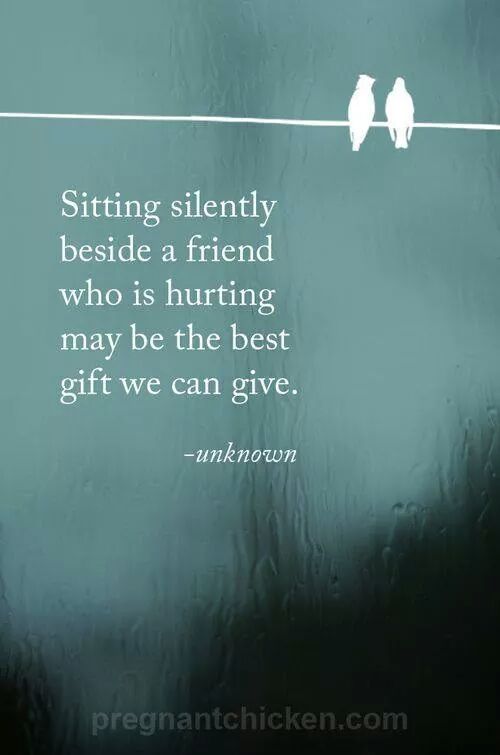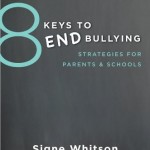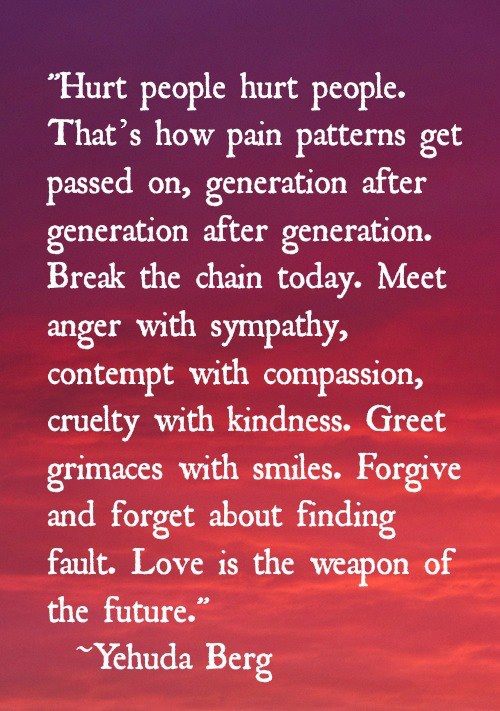Posts tagged activities to stop bullying
Bullying Prevention Efforts in Elementary School
08 Things Kids Can Say & Do to Stop Bullying
0My students tell me that one of the most frequently applied skills I teach them is the use of Bully Bans. Bully bans are short, to-the-point statements meant to interrupt an incident of bullying in its tracks without escalating the conflict. These practiced responses take into account that during stressful moments, kids’ brains rarely come up with “helpful” things to say. Rather, the heat-of-the-moment usually sparks emotionally-charged, conflict-fueling words and actions. Bully bans help turn this around. Find out more from my recent Psychology Today post, here:
Specific lesson plans for teaching Bully Bans to kids are featured in Friendship & Other Weapons: Group Activities to Teach Young Girls to Cope with Bullying.
A Simple Hello Can Transform a Student’s School Experience
0In 8 Keys to End Bullying: Strategies for Parents & Schools, I tell a real-life story of a 9-year old student who came to me on her second day of school and told me, in a voice that I can only describe as gleeful, that her teacher really liked her. When I asked her how she could tell, she explained:
She smiles at me every day when I walk into her room. It’s so different from my teacher last year. She was always doing work and never even looked up before the second bell, except to remind us of anything we were doing wrong. I think the teacher this year really likes me!
A series of twirls and joyful shrieks later, it was plain to see how something as simple and brief as a warm acknowledgement from a teacher meant the world to that student. To quote Jerry Maguire, the teacher “had her at hello.”
Connections heal and more times that I can count, it is the “little things” like the personal greeting at the door or the smile across the lunch room that go the longest way in making kids feel valued in a school setting.
That’s why this story, featured yesterday on ABC’s Good Morning America, really caught my eye. Please watch and enjoy!
New Reviews are In for the 8 Keys to End Bullying Activity Book
0
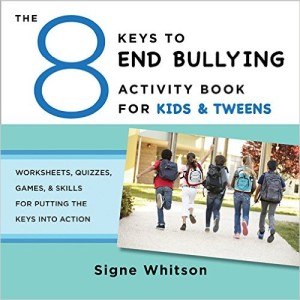 “A needed topic in a great format. It is an Activity Book and more! The author uses a variety of methods to communicate her key points. Drawing for the artist, writing for the wordsmith, up and at ’em for the active learner. Each key has a checkpoint (post test) to determine comprehension. The stories use culturally relevant names and situations which I find helpful working with the population I do. I especially like Key 6,Be Known For Being Kind, which give 10 things to say and do to stop bullying. New ideas allow for independent thinking and actions and it doesn’t even list “tell an adult” which most kids say doesn’t work. Thanks, Ms. Whitson for a great resource.”
“A needed topic in a great format. It is an Activity Book and more! The author uses a variety of methods to communicate her key points. Drawing for the artist, writing for the wordsmith, up and at ’em for the active learner. Each key has a checkpoint (post test) to determine comprehension. The stories use culturally relevant names and situations which I find helpful working with the population I do. I especially like Key 6,Be Known For Being Kind, which give 10 things to say and do to stop bullying. New ideas allow for independent thinking and actions and it doesn’t even list “tell an adult” which most kids say doesn’t work. Thanks, Ms. Whitson for a great resource.”
The activities are fun to do and I couldn’t wait to see what was coming next. After I completed the 8 Keys I really wanted to get rid of bullying at my school. I learned what bullying is and things I can do to stop it.” (Ashlyn, age 11)
“Signe Whitson continues to be one of the most dynamic leaders in bullying education and crisis intervention among youth. These interactive guides for students, parents, and educators provide the hands-on tools to help kids and tweens cope wisely with real-life situations, both offline and online. These workbooks are full of engaging and collaborative games, worksheets, and thought-provoking activities that will stay with your child longer than simply reading a book. Whitson’s activity program allows you to get involved with your child on both an emotional level and an educational one―these are definitely two books you must reach out and buy.” (Sue Scheff, Parent Advocate, Internet Safety Expert and author of Shame Nation)
“Well-organized and easily relatable, this workbook and companion guide will help kids understand categories of aggressive behaviors―such as how rude, mean, and bullying behaviors differ―and teach them to treat others with respect and kindness. Bravo for a fun, accessible anti-bullying activity program!” (Carrie Goldman, award-winning author of Bullied: What Every Parent, Teacher, and Kid Needs to Know About Ending the Cycle of Fear)
“Signe Whitson continues to provide value that very few do: a detailed approach that offers tools and skill-building for young people in an action-based training format. This is the only way to impact one of our toughest issues that all people face: bullying. An amazing resource for educators and parents, with proven strategies to fight bullying situations.” (Jason Spector, Veteran Physical Educator and Coach, Co-Founder of Sweethearts and Heroes Anti-Bullying Program, father of two)
Thanks, all, for your kind words and great feedback! If you have not uploaded our review yet, please do so at https://www.amazon.com/Keys-Bullying-Activity-Book-Tweens/dp/0393711803/ref=pd_bxgy_14_img_2?_encoding=UTF8&pd_rd_i=0393711803&pd_rd_r=ZNTF9NXEC95WBS47H7CM&pd_rd_w=x1GW6&pd_rd_wg=jFlBe&psc=1&refRID=ZNTF9NXEC95WBS47H7CM
Fun Activity Helps Kids Tell the Difference Between Bullying and Other Forms of Conflict & Aggression
0In my book, 8 Keys to End Bullying: Strategies for Parents & Schools and in this article featured online in Psychology Today, I make a distinction between behaviors that are rude, behaviors that are mean, and 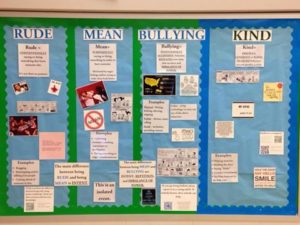 behaviors that are true examples of bullying. I explain why it is critical that parents and professionals are able to discern the differences between these troubling behaviors and explain the risks of lumping all bad behaviors under the bullying umbrella.
behaviors that are true examples of bullying. I explain why it is critical that parents and professionals are able to discern the differences between these troubling behaviors and explain the risks of lumping all bad behaviors under the bullying umbrella.
I created the activity below for educators, counselors. social workers, school psychologists, youth workers and parents to use with kids to help them learn and integrate behavioral definitions of rude, mean, and bullying. Please feel free to use this activity with the young people in your life to teach them about the key distinctions between these three behaviors. (I do ask that you include my name and contact information if you make photocopies of this activity or use it in any type of presentation.
ACTIVITY: Is it Rude, Is it Mean, or Is it Bullying?
After reviewing the distinctions between rude, mean, and bullying behavior (below), read the following scenarios aloud to kids. Challenge kids to move to a designated section in the room if the behavior represents bullying, to a different section if the behavior demonstrates meanness, and to a third section if the behavior is considered rude. Allow kids time to discuss why they chose to stand in a particular section, encouraging personal examples and reflection, as appropriate. An Answer Key is provided to guide your discussion.
DEFINITIONS:
Rude = Accidentally saying or doing something hurtful.
Rude behaviors include:
- Burping in someone’s face
- Butting in line
- Bragging about making a team
Rude behaviors are usually thoughtless and ill-mannered, but not meant to actually hurt someone else.
Mean = Saying or doing something to hurt a person on purpose, once or maybe twice.
The main difference between “rude” and “mean” behavior is that rudeness is usually unplanned. Mean behavior, on the other hand, is done on purpose.
Mean behaviors include:
- Making fun of what someone looks like or what they are wearing
- I don’t like your short hair. You look like a boy.
- Why did you wear that dress?
- Insulting someone’s intelligence or ability
- You’re so stupid.
- You stink at soccer.
- Saying or doing something unkind after a fight with a friend.
- Saying, “I hate you.”
- Taking something that doesn’t belong to you.
Make no mistake; mean behaviors are very hurtful and should be avoided at all times! Still, meanness is different from bullying in important ways that we’ll talk about next.
Bullying = Cruel behavior, done on purpose and repeated over time, that involves an imbalance of power.
To best understand bullying, remember the 3 P’s:
- It is done on Purpose; there is nothing “accidental” or unplanned about bullying
- It is a Pattern; the cruelty happens over and over again
- It is all about Power; the cruel person has more control and influence than his/her target
Kids who bully say or do something purposefully hurtful to others and they keep doing it again and again, with no sense of guilt or shame. Kids who bully have more power than the kids they pick on. This power may come from being older, stronger, or bigger in size or it may come from getting several kids to gang up on one target, to make that target feel hurt and alone.
SCENARIOS:
- Kayla tells MacKenzie that she can’t sit with her on the bus today because she is saving the seat for a girl from her Social Studies class.
- Lucas tells Damien that he can’t play with the Legos because he is the worst builder in the whole first grade.
- Talia makes plans to go to the school dance with her new friend, Gwen. Katie tells Talia that if she hangs out at the dance with Gwen that everyone will think she is a total weirdo and no one will like her anymore. At lunch that day, Katie convinces everyone that it would be a really funny joke to all laugh out loud when Talia approached the lunch table.
- Devin and David are friends. In school, they had an argument. Devin called David a name and David shoved him out of his way.
- Maggie is making fun of the fact that Jessie hangs out with the boys at recess and wears long basketball shorts to school every day. In gym class, Maggie told her to go play on the boys’ team and the day before in homeroom, she wrote the words “You’re so gay” on Jessie’s desk.
- Brady told JP he would beat him up if he touched his cars, then shoved JP out of his way. During math class, he threw a spitball at JP and kicked his chair out from under him. He threatened to punch JP if JP told the teacher.
- Emma and Brit play on the same field hockey team and are normally best friends, but have been in an argument for three days. Emma called Brit a mean name after practice and Brit send Emma a mean text.
ANSWER KEY
- Kayla & MacKenzie: Kayla is being rude, but here is no evidence of intentional meanness, repetitive behavior or a power imbalance.
- Lucas & Damien: Lucas is being mean. It appears that his words are intended to hurt Damien. There is no evidence of repetitive behavior or a power imbalance, however.
- Talia & Katie: Katie is acting like a bully. She has creating an unfair balance of power by getting all of the girls at the lunch table to laugh at Talia. She is also using words like “everyone” and “no one” to threaten Talia about how she will be socially excluded if she does not do what Katie wants her to do.
- Devin & David: Devin and David are engaging in rough play, or rude behavior. This is not bullying because the boys are usually friends, the power balance is relatively equal and the boys are not intending to harm each other.
- Maggie & Jessie: Maggie is acting like a bully. She is making fun of Jessie repeatedly, with intention to cause harm. Slurs based on sexual orientation are particularly cruel for young people and should be taken seriously by adults wishing to create a positive school culture.
- Brady & JP: Brady is acting like a bully. He is engaging in repetitive cruel behavior, designed to hurt JP. He is using intimidation and threats to create a power imbalance.
- Emma & Brit: Emma and Brit are being mean to each other. They are intending to hurt each other with their words and texts. The girls are normally friends, though, and at this point, this appears to be a mutual argument rather than a repetitive pattern of one-sided cruelty.
If you know a young person who would benefit from exploring the distinctions between rude, mean, and bullying and/or who would like to learn skills for managing conflict and bullying check out the 8 Keys to End Bullying Activity Book for Kids & Tweens. This book (and Companion Guide, sold separately or as a set) provides dozens of worksheets, quizzes, activities, puzzles, and skill-building games to teach these concepts and much, much more. Check it out here!
How to Listen so that Kids Will Talk About Bullying
0In the last several years of working as a School Counselor and speaking with professionals, parents and students across the United States on the topic of Bullying Prevention, one of the observations that stands out to me the most is that parents, in general, are very eager to talk about bullying while their kids, on the other hand, seem to want to do anything but talk to their parents about this topic. The more parents pry, the more kids withdraw. The more parents push, the harder kids pushback—with excuses, minimizations, abrupt subject changes, stonewalling, silence, and sometimes even complete denial that a peer problem exists.
Why is it that so many young people are so loathe to talk to their caregivers about bullying? The more I ask students this question, the more often they tell me some version of this frustrated rationale:
“If I tell my parents, they are going to make a big deal out of it and tell everyone what’s happening to me.”
Or
“If I tell my parents, they’ll rush into school to try to meet with the Principal, which will definitely make things way worse for me.”
What can parents, caregivers, educators, and other trustworthy adults do to help a young person feel safe enough to confide in them about a bullying situation? How can you make your child feel supported—instead of embarrassed or endangered—enough to tell you when they really need your help?
When I ask school-aged kids how they would like their parents to respond when they tell them about a bullying situation, again the responses are nearly universal. Most commonly, kids tell me, “I just wish they’d listen.” This is frequently followed by, “I wish they’d give me some advice but let me try to handle it on my own first.”
What follows are five guidelines for parents and professionals on how to listen well and respond in helpful ways when a young person reports an incident of bullying:
1. Stay Calm
First and foremost, when a young person takes the leap of faith to talk to you about a bullying situation, stay calm. Avoid freaking out. The dynamics they describe may be very run-of-the-mill or they may be entirely appalling, but either way, your role as a helpful adult is to listen well and respond as if the situation is completely manageable. The steadfastness of your response will go a long way in shaping the child’s attitude as the two of you begin to move forward toward solutions.
To read the remaining five guidelines about how to listen well to young people so that they will talk honestly about bullying, please visit the original posting at Psychology Today.
The Most Important Thing About Bullying–in 7 Words or Less
0While I soak in as much Summer as I can before the 2016-17 school year begins, I am thinking about my own mantras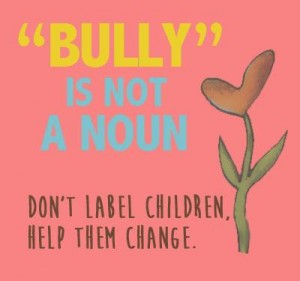 of School Counseling—the most important things I can offer my students to make them each feel heard, understood, safe, and valued. What follows are my Bullying Prevention mantras (along with their slightly longer explanations.)
of School Counseling—the most important things I can offer my students to make them each feel heard, understood, safe, and valued. What follows are my Bullying Prevention mantras (along with their slightly longer explanations.)
In One Word: EMPATHIZE
Bullying is a purposeful act of cruelty. Kids who bully show a lack empathy for the feelings and experiences of their targets. Parents and professionals play a key role in cultivating empathy in all kids, especially those who are most likely to get caught up in moments of social whack-a-mole, knocking others down just to pull themselves up the school social ladder.
In Two Words: WORDS MATTER
Okay, I already previewed this one, didn’t I? At my elementary school, many of the students call me Queen Signe. Some of them do it because they like to be silly and others do it just for fun but most of the kiddos I work with use this term because our comprehensive, Every Action/Every Day Bullying Prevention strategy means that we are always talking about the fact that words matter. The way we speak to each other, including the names we use and the words we choose, all have a huge impact on how we feel about ourselves and how we enjoy our time at school.
Important point: The same applies to how we communicate through technology. Teach kids that the words they text, tweet, send, and post should be used with the same amount of care as the words that they say to someone in person.
For the rest of my mantras, please check out my article on Psychology Today:
New Review of 8 Keys to End Bullying: Strategies for Parents & Schools
0My newest book, 8 Keys to End Bullying: Strategies for Parents & Schools is now available online and in stores. This review, posted in the Summer 2014 Newsletter from Barclay & Associates, provides a chapter by chapter summary:
http://us7.campaign-archive2.com/?u=c7443bd17831f510a68f39215&id=5432c936f6&e=75c608d3c9
FREE International Bully Prevention E-Zine now available
0Check out the January edition of the International Bully Prevention E-Zine. GREAT read for adults and kids alike. And I’m not just saying that because an article of mine is included.
http://www.imgstream.com/KnappStory/2012_01/IBPM_2012_01.html
Turning Bystanders Into Heroes
0Try this activity to help kids understand how important their role as a bystander–er, HERO, is in a bullying situation.
Give a child 5 wooden craft sticks.
Ask him to write his name on the first one. Then, tell him to break the stick. The task should be easy.
Emphasize that on our own, we are breakable.
Next, ask each child to write down the names of three people who they know they can count on for friendship and support, on three of the remaining sticks. It can be a parent, family member, friend, or even a pet.
On the remaining craft stick, ask the child to write something that they are good at, such as a sport, art, or even being a good friend to others.
Have the child stack his four sticks, one on top of the other, then challenge him to again try to break the sticks. This time, the task should be impossible.
When I do this activity with kids, usually in schools or troop settings–the expressions on the their faces as they realize the strength of the stacked sticks is priceless every time. I know my point has been made. But I say it anyway:
“When you support one another, and have confidence in your own abilities, you become unbreakable. Keep these craft sticks as a reminder of how strong you truly are!”
My other reminder/mantra to kids, when we talk about bullying and bystanding, is that it is never OK to do nothing about bullying. I have kids repeat the phrase. I encourage them to shout it. Sometimes, we see if the whole building can hear us! I want kids to remember this truism.
This week, in light of the child sexual abuse scandal at Penn State University, it seems especially important.
For more ideas and activites to help kids cope with bullying, please check out Friendship & Other Weapons: Group Activities to Help Young Girls Cope with Bullying, available November 15, 2011.

